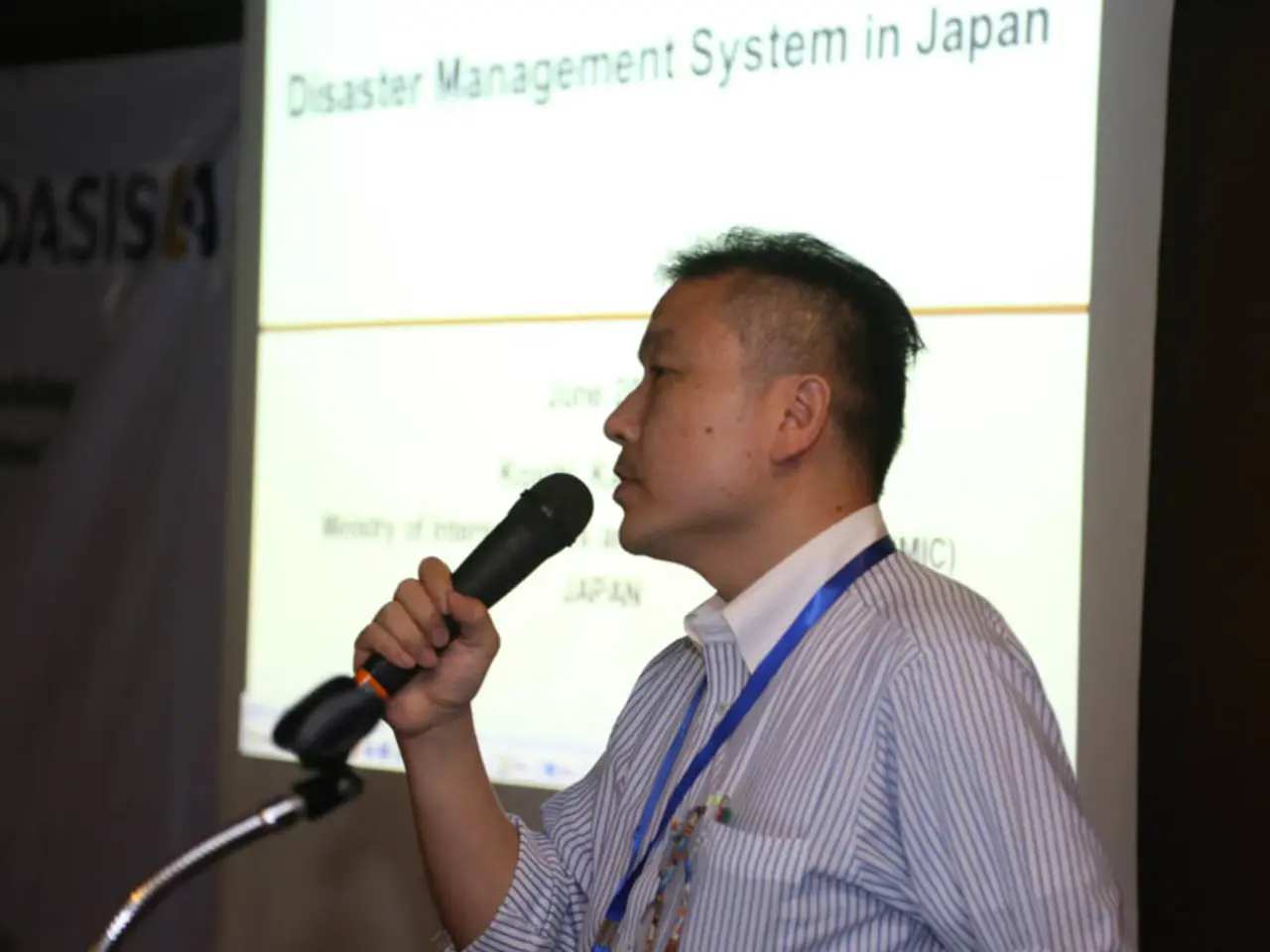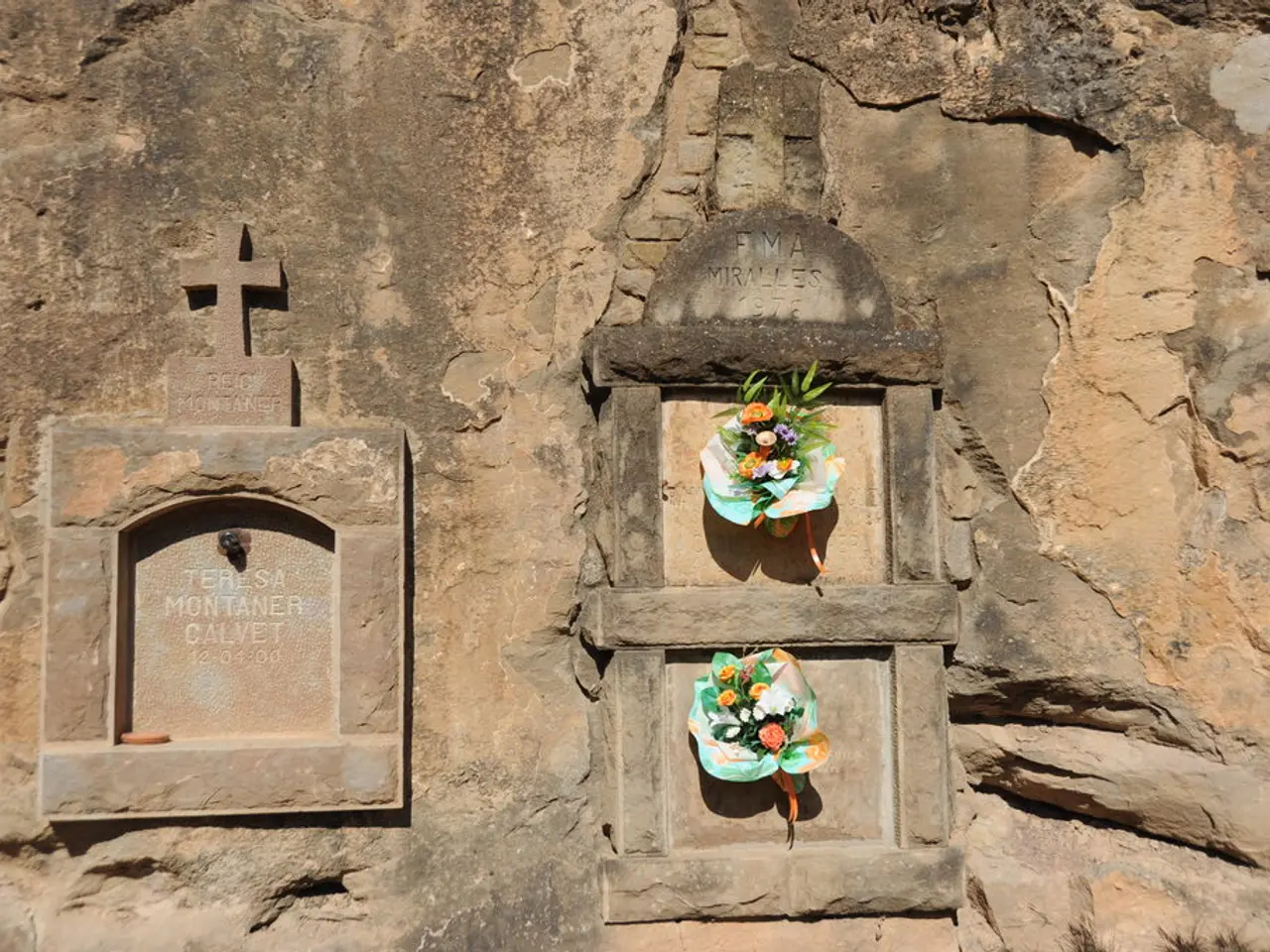Thousands Flee from Volcano Hazard Zone in the Philippines
The Mayon Volcano, the most active volcano in the Southeast Asian country, stands at a height of 2,462 meters. Located in a geologically active region, the Pacific Ring of Fire, this iconic volcano is known for its perfect cone shape and has been active for over 400 years, erupting approximately 50 times in that period.
The last major eruption occurred in 2018, forcing tens of thousands of people to evacuate. As of early August 2025, the volcano is under close observation due to ongoing activity. The Philippine Institute of Volcanology and Seismology (Phivolcs) continues to monitor for sudden steam-driven (phreatic) eruptions, rockfalls, landslides, and lahar flows, particularly triggered by heavy rains from tropical storms and monsoon rains.
Key updates include a lahar advisory issued on July 24, 2025, due to heavy rainfall from Tropical Storm Dante, Severe Tropical Storm Emong, and the southwest monsoon, which could remobilize loose volcanic materials from previous eruptions. Continuous 24/7 live monitoring streams are available showing the current state of the volcano, which has a history of frequent explosive eruptions but no immediate large eruption was noted in recent bulletins. Seismic activity and crater glow observations recorded a few volcanic earthquakes and partial crater obscuring by ash or steam but did not signal a major eruption as of late July to early August.
As of August 7, 2025, no new explosive eruptive events have been confirmed in the latest 24-hour monitoring summaries. Hazards are mostly related to phreatic activity, lahar risk, and landslides rather than magmatic explosions. However, vigilance remains high as the volcano is known for its cyclical activity and explosive nature, and sudden steam-driven eruptions can occur unpredictably.
In the event of an explosive eruption, lava could shoot out of Mayon in fountains, flow down in long streams, and be accompanied by pyroclastic flows, where avalanches of hot rock, ash, and gases race down the slopes. The provincial government of Albay has declared a state of calamity to expedite the release of relief funds.
Despite the ongoing activity, Mayon remains a popular tourist destination, often referred to as the "fire mountain." However, residents in vulnerable areas are advised to stay alert as heavy rains can trigger secondary volcanic hazards even without a fresh major eruption. As of the given information, the national disaster risk reduction and management council has reported 12,804 evacuations due to Mayon's activity.
Phivolcs continues to issue warnings and updates about Mayon's activity, ensuring the safety of the public and expediting relief efforts when necessary.
Political discussions in local gatherings frequently revolve around the ongoing activity of the Mayon Volcano, a natural hazard that has forced thousands to evacuate and poses continuous danger due to lahar risks, landslides, and phreatic eruptions. In the general news, updates about the volcanic activity, evacuations, and emergency measures are regular features, underscoring the need for increased vigilance and disaster preparedness in the region.








